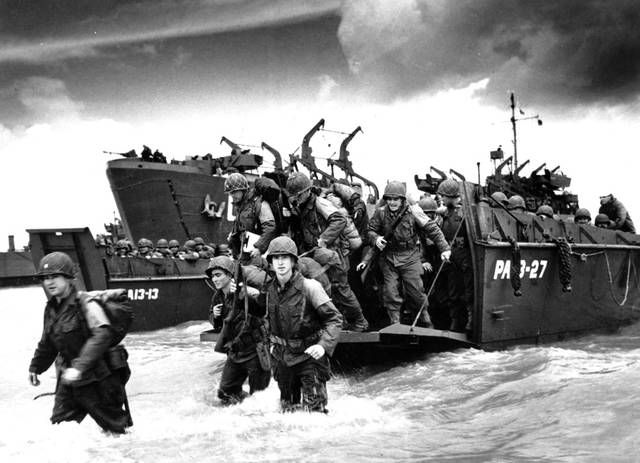Click here to subscribe today or Login.
Ike was bracing for a disaster, and he was prepared to take the blame.
As the world’s biggest invasion force gathered off England’s Isle of Wight on the night of June 5, 1944, Supreme Allied Commander Dwight D. Eisenhower was chain-smoking and mentally gearing up for the worst.
Into his wallet, Eisenhower had tucked a letter.
“Our landings in the Cherbourg-Havre area have failed …” it began.
“My decision to attack at this time and place was based upon the best information available. The troops, the air, and the navy did all that bravery and devotion to duty could do,” Eisenhower wrote on that nervous night 74 years ago. “If any blame or fault attaches to the attempt, it is mine alone.”
That is what leadership looks like.
More than 6,000 ships and nearly 160,000 American and Allied troops would soon sail across the unpredictable waters of the English Channel bound for the heavily defended beaches of Hitler’s Fortress Europe.
In the early hours of June 6, the assault began. D-Day had arrived, but the outcome was far from certain and Eisenhower’s thoughts were preoccupied with the men about to put their lives on the line for the cause of liberty and human decency. The high cost of failure haunted him.
In the end, the Allied invasion of Normandy proved a decisive victory. The first day paved the way for the liberation of Europe and the defeat of Nazi tyranny, though at a cost of 4,413 Allied troops confirmed dead and nearly 10,000 casualties overall.
Of course, the death toll had only begun to mount. From D-Day through Aug. 21, 1944, according to an official White House fact sheet, the Allies landed more than 2 million men in northern France, suffering more than 226,386 casualties: 72,911 killed/missing and 153,475 wounded.
But victory lay ahead, and Eisenhower never had to deliver that awful “in case of failure” message. The fact that he was prepared to do so — accepting responsibility and blame while praising the sacrifices of his troops — says much about the man and his character.
It is, of course, only one of the lessons we can take from that fateful day and its immediate aftermath.
June 6, 1944 reminds us that the United States and her allies, acting together for a just cause, can be the most powerful force for good the world has ever seen.
It reminds us that the desire for freedom and human rights are causes for which many have suffered and died. Thousands of brave men were very much prepared to die for them on that June morning, some barely more than boys.
They stormed the beaches under the flag that still flies over this beautiful land, but we must never lose sight of the essential fact that they didn’t go to war for a flag.
They went to war to protect a way of life. They went to war to protect families, homes, country and freedom.
They went to war to defeat a brutal dictatorship led by a band of violent thugs — in which minorities and dissenters were persecuted and killed, militarism and loyalty to the regime were the highest civic virtues, free speech was outlawed, and one tyrant exercised unchecked power over millions through fear and coercion.
They went to war to breach Hitler’s wall, and to save us all from living under similar oppression.
We owe it to them to continue that fight. We owe it to them to keep America free, just and democratic.
We owe it to them, the world — and Ike’s memory — to never forget what true leadership looks like.





